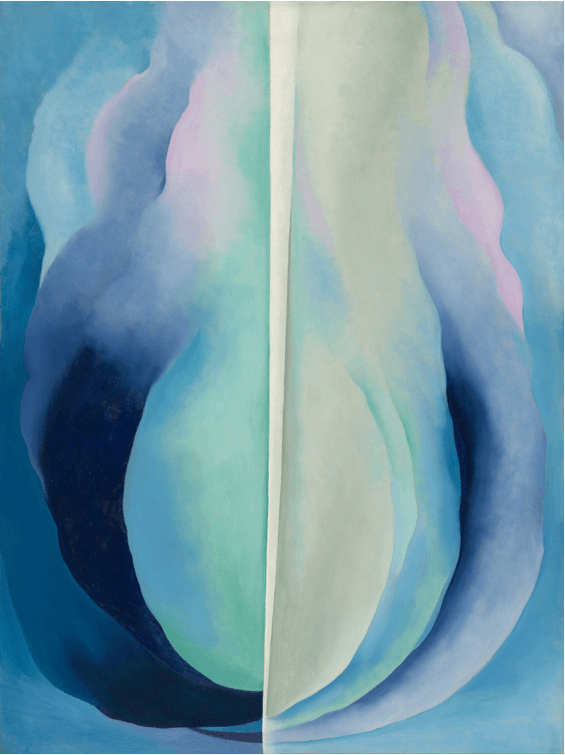Georgia O’Keeffe decided as a child that she was going to be an artist when she grew up. Although she was unsure of what kind of art she would make, she later recalled, “I hadn’t a desire to make anything like the pictures I had seen.” Indeed, O’Keeffe’s long career was marked by ceaseless invention for which she received near constant acclaim, starting with her earliest paintings, which debuted in 1916 at New York’s famous 291 gallery, and continuing until her death, seven decades later, in 1986. In 1946 O’Keeffe was the subject of The Museum of Modern Art’s first retrospective exhibition devoted to a woman artist.
Although O’Keeffe is best known for figurative paintings of flowers, skulls, and the desert landscape of New Mexico, where she settled in 1946, the artist focused on abstract representation during the first phase of her career, from the 1910s into the ’30s. Abstraction Blue, from this period, exemplifies the freedom O’Keeffe felt and the possibilities she explored at this time through art’s most basic building blocks: “I found that I could say things with color and shapes that I couldn’t say in any other way—things I had no words for,” she explained.
“I decided to start anew,” Georgia O’Keeffe wrote to a friend in 1915, “to strip away what I had been taught—to accept as true my own thinking.” O’Keeffe’s statement reflects her transition from the naturalistic mode of representation she had been taught to abstraction in her painting. The development of this new style is evident in Abstraction Blue, completed twelve years later. The painting is dominated by undulating swirls and curves of blue tones emanating from the lower half of the canvas, bisected by a lighter crevice of paint that cuts the canvas vertically.
Georgia O´Keeffe
Abstraction Blue
1927
Publication excerpt from MoMA Highlights: 375 Works from The Museum of Modern Art, New York (New York: The Museum of Modern Art, 2019)










